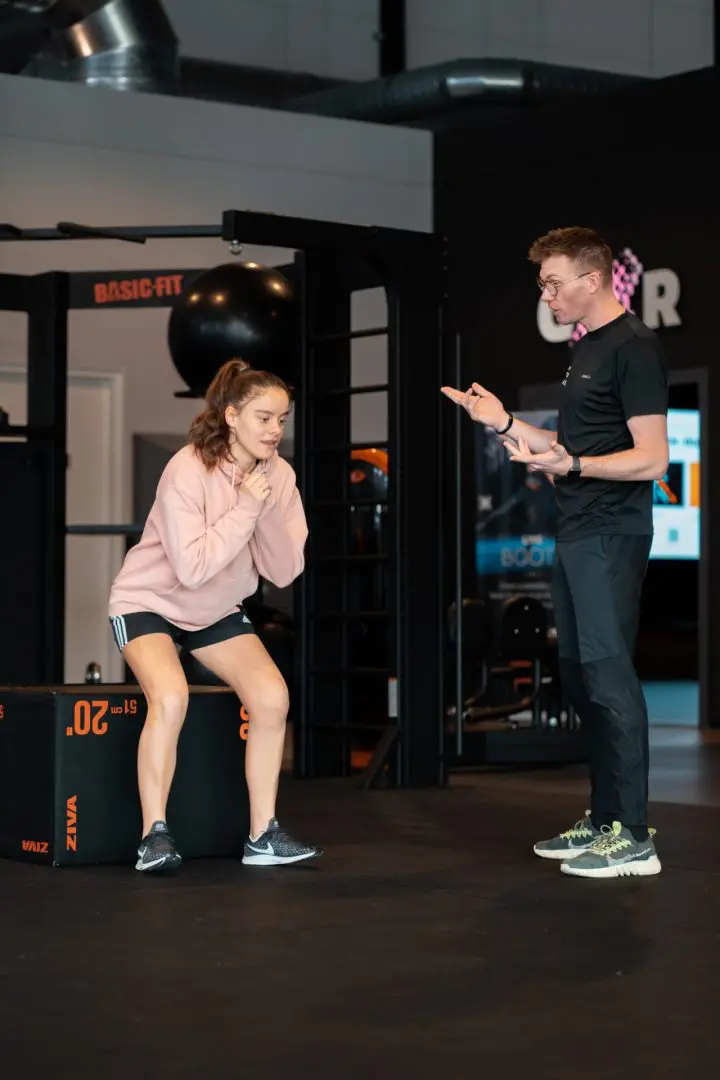Knee pain when squatting? The perfect squat!
The squat is a compound (= exercise where movement takes place in multiple joints) exercise that is well known among strength athletes. It is an exercise used in the gym to strengthen leg muscles, but is much more than that! Regular training of leg muscles through squats, among other exercises, can even help maintain physical ability later in life.

The squat
The squat is a compound (= exercise where movement takes place in multiple joints) exercise that is well known among strength athletes. It is an exercise used in the gym to strengthen leg muscles, but is much more than that! Squatting is actually nothing more than squatting/bending and has been part of your exercise routine from childhood. Think back to your childhood, when you were tired of standing so would squat for a while. Even in later life, the squat frequently reappears in our daily movement pattern, for instance when we need to pick something up from the ground and even somewhat when we stand/sit on a chair. Exercising the leg muscles regularly through squats, among other things, can even help maintain physical ability later in life.
Muscle activation
When we start analysing the squat, we observe that it is an exercise that primarily trains the calf muscles, hamstrings, quadriceps and glutes. In addition, there is a lot of activity in the muscles of the spine to stabilise the body. This is called trunk stiffness or trunk stability and is necessary to ensure we don't fall over. In short, an exercise with great potential! There is a certain technique associated with performing a squat in the gym. Its purpose is to establish boundary conditions to ensure the athlete's safety.
For a (back) squat, this looks like this;
- Place your feet hip-width away with toes pointing slightly outwards
tilt your pelvis slightly to create a slightly hollow back - Sink down taking care to keep the weight on the back/middle of the foot and the upper body upright as much as possible
- Prevent the knees from going in
- Sink to at least a 90-degree angle at the hip while keeping the upper body upright as much as possible
The perfect squat
We can argue that proper execution of the squat is important to achieve optimal training results and ensure your own safety. Practice just shows time and again that athletes pay too little attention to technique and consider training weight much more important. This is where squatting increases the risk of knee injuries. If you are going to squat, and certainly perform a squat with extra weight, you want to have a good foundation. Compare it to a house, without a solid foundation, the house will never be strong enough to support the structure.
Conditions
We often see people in the gym squatting on a shoe like the Airmax or one with a very thick sole. This comes at the expense of stability because it makes the surface less solid. It is better to wear a simple flat shoe or a specially designed squat shoe. This ensures maximum stability. Looking at what you especially don't want to do is squatting on a shoe with an air cushion like the Airmax. This comes at the expense of stability. Furthermore, we often see people putting their feet close together. This comes at the expense of your range of motion because the abdomen is stopped by the legs. So it is better to perform the squat with the legs shoulder-width apart. Then you have room for the belly to go between the legs and you can make an optimal range of motion. Many people (and especially beginners) tend to 'drop' the knees inwards while squatting. Instead, try to push your knees outwards for your feel, so that everything moves neatly in one line. Last but not least, knees past the toes, because that's not allowed, right? Wrong! There is a myth surrounding the squat where people wrongly think that the knees should not pass the toes while squatting, as this would greatly increase the risk of injury. This is incorrect. It is fine if the knees pass the toes during the squat, as long as this does not start the movement. Instead, you want to ensure that the movement is started by moving the hips and buttocks backwards while the knees are bent. If, at the end of the movement, the knees come forward more, that's totally fine by us!
Tips
If you do experience knee problems when squatting now, make use of the following tips;
Make sure your squat technique is good. You can check this by filming your squat and watching it back. Having a professional review your squat can also add value.
If you have complaints when squatting, it may well help to adjust the exercise temporarily. See what you can do and adjust the exercise by temporarily using less training weight or reducing the range of motion.
In case of complaints, visit your physiotherapist to determine the cause of the complaints. The physiotherapist can make a diagnosis and come up with an adequate treatment plan together with you.
